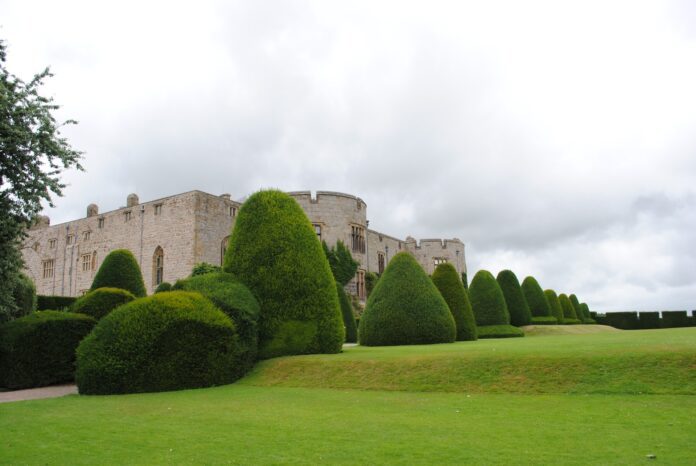Topiary is the art of clipping trees and bushes into shapes. Think balls, pyramids and even animal shapes like elephants. Searches for topiary have increased by 50% over the past 5 years (Google Trends) showing that many a Brit wants to learn how to trim their bush. On top of this, searches have spiked in the past 24 hours – perhaps inspired by Chelsea Flower Show which runs until Saturday.
Talking to Toolstation, topiary enthusiast and author of Growing Topiary – A Beginner’s Guide from the Ground Up, Anthony Blagg, shares an introduction to the ancient art, with tips on how to get started:
What is topiary?
Topiary is the art of clipping of a bush or tree into shapes. These shapes might be geometrical, such as balls or pyramids, or representational, such as birds and animals.
What are the best types of trees to use?
Trees that are tolerant of clipping or heavy pruning are best. You want something that grows relatively slowly into compact dense forms after a few years. Traditionally, Yew and Boxwood are used but there are many other types that can be shaped. It also depends on how big you want the finished product to be.
Do topiary trees tend to be evergreens?
Most topiary trees tend to be evergreen as they give form to a garden during winter when nothing else is growing. However, formal topiary hedges sometimes use deciduous trees such as Beech or Hornbeam.
What are your top tips for topiary beginners?
Never be tempted to clip trees, especially newly planted ones, in cold weather. Always use sharp shears, secateurs or other implements to prevent tearing as this can let disease into a tree. Go slowly and look at your topiary from all angles. Remember you can always cut away more, but you can’t glue anything back on if you have been too rigorous!
Why do it yourself?
More than anything, it’s fun and satisfying to create your very own sculpture. Ready-made topiaries are available in garden centres but tend to be very expensive as they have been tended to in a nursery for five or more years.
What tools do you need to get started?
Don’t think you have to buy those fancy topiary shears you see advertised. To get started, all you need is a pair of scissors but, of course, make sure you keep them solely for garden use. As you progress, you may find you need to invest in secateurs, loppers and pruners.
Hedge shears may be needed to tackle larger trees. I’d recommend choosing lightweight ones for large projects to save your arm muscles. Additionally, you may require secateurs or lopping shears to cut through larger branches, especially when you only want to cut off a section accurately.
Do you have any tips to stop topiary trees going brown?
This is usually due to too little water or too much. If you see a Boxwood cone in a fancy terracotta pot outside an Italian restaurant which has gone brown this is because it hasn’t been watered enough and the pot has soaked up whatever water was there. Pots need watering more than trees planted directly into the soil. Some plants don’t like being waterlogged in winter so check you are not planting anything in a boggy area.
What do you know about the history of topiary?
Topiary has been regularly in and out of fashion for many centuries. There’s even evidence to suggest it was used by the ancient Egyptians. However, the topiary we know today started in Ancient Rome. ‘Topiarius’ means ‘ornamental gardening’ in Latin. It fell out of fashion in many stately homes as Lancelot “Capability” Brown tore many of them up to make open landscapes but the art continued to thrive in cottage gardens in Britain.
Can you recommend any topiary gardens to visit in the UK?
The king of topiary gardens is at Levens Hall near Kendal in Cumbria. It still has many of the trees and forms from when it was first planted in 1690. However, there are many other examples of topiary throughout the country. The website Topiary in the United Kingdom has listings by county so there is bound to be somewhere interesting near you.
Why would you use a topiary frame? Are they necessary?
Topiary frames are relatively expensive and obviously only allow you to develop one particular shape. Many are quite small and your tree will outgrow them so they are not at all necessary. You may want to use one for your first project to use as a cutting guide but it’s entirely up to you.
Does topiary have to go inside in winter?
Most topiaries are planted directly into the ground so this won’t be possible. Even specimens in pots will probably be too heavy to move. Plus, most evergreen trees such as Yew and Boxwood are quite happy in British winters. During the early years of growth, you may want to cover any delicate specimens with a garden fleece during winter – especially if your area is prone to prolonged frosts. Mediterranean plants such as Bay Laurel and Olive would come in this bracket.
Further information can be found at : https://www.toolstation.com/content/what-is-topiary
Help keep news FREE for our readers
Supporting your local community newspaper/online news outlet is crucial now more than ever. If you believe in independent journalism, then consider making a valuable contribution by making a one-time or monthly donation. We operate in rural areas where providing unbiased news can be challenging. Read More About Supporting The West Wales Chronicle

























